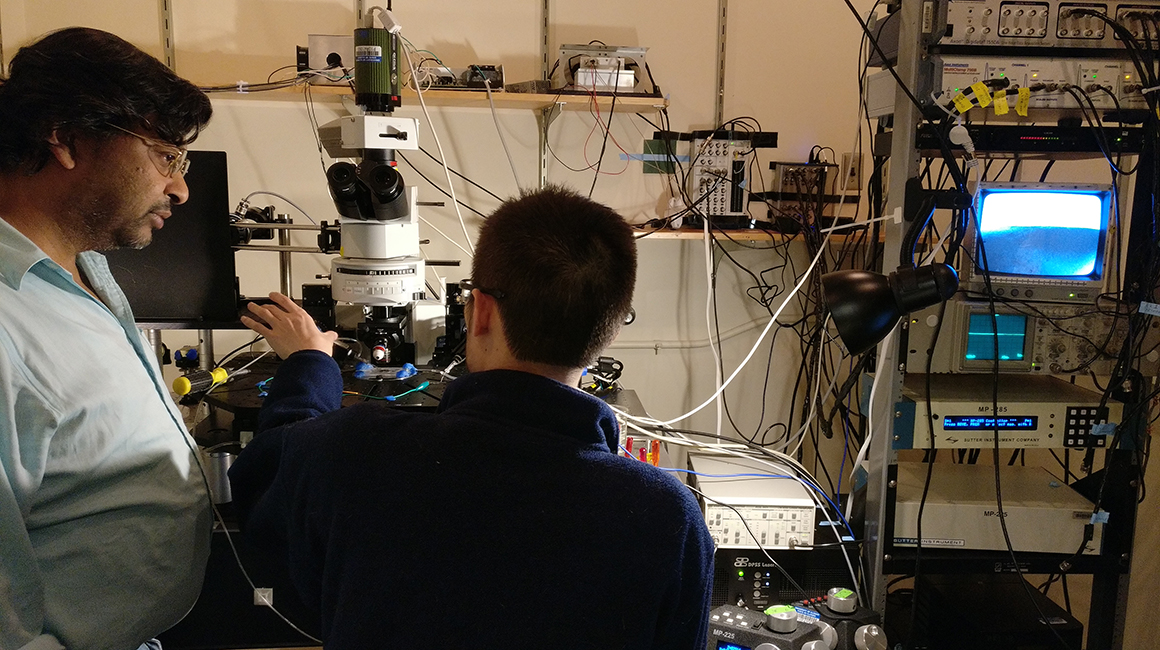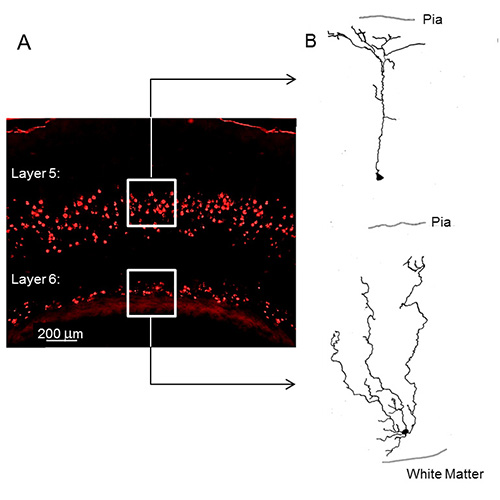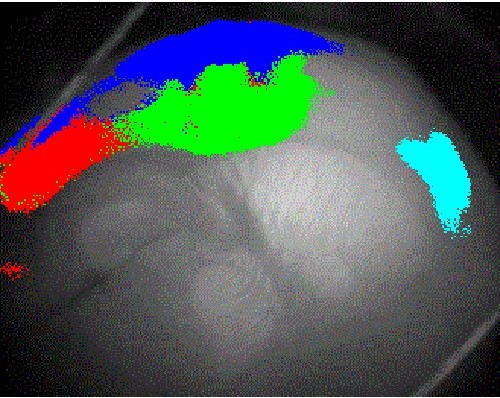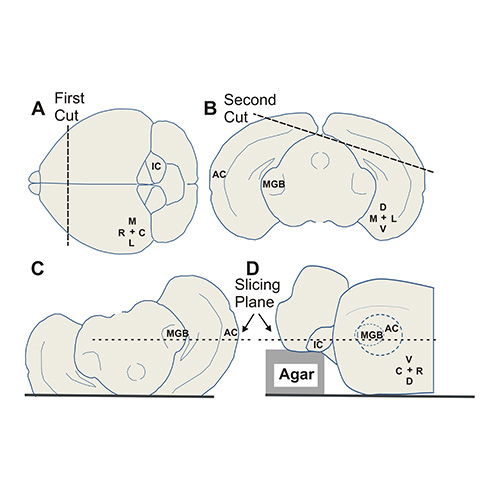Information about the Llano Lab.
 At the Llano Lab, we study the mechanisms by which complex sounds, such as speech, are processed by the auditory system. We hypothesize that the auditory system generates internal models of the sensory world, and uses these models to extract meaning from complex sensory stimuli. One potential neuronal substrate for this generative model is the massive system of descending projections from the auditory cortex to virtually every level of the subcortical auditory system. These projections are critical for shaping the response properties of neurons in the auditory periphery, but very little is known about their functional organization.
At the Llano Lab, we study the mechanisms by which complex sounds, such as speech, are processed by the auditory system. We hypothesize that the auditory system generates internal models of the sensory world, and uses these models to extract meaning from complex sensory stimuli. One potential neuronal substrate for this generative model is the massive system of descending projections from the auditory cortex to virtually every level of the subcortical auditory system. These projections are critical for shaping the response properties of neurons in the auditory periphery, but very little is known about their functional organization.
We employ electrophysiological, novel optical, optogenetic, computational and advanced anatomical approaches to study the projections from the auditory cortex to subcortical structures. One specific set of issues that we address concerns the role of different cortical subnetworks in complex sound processing. For example, neurons in both cortical layer 5 and cortical layer 6 project to subcortical structures, and the neurons in these layers have very different intrinsic, integrative and synaptic properties. Our work explores the different roles that these groups of neurons play in the processing of complex sound.
Our Principal Investigator is Daniel Llano.
Check out the different tabs below to learn more about our projects or visit our website here.
Corticocollicular System
 We are interested in how the cortex modifies subcortical structures during the processing of complex sounds. As a starting point, we are focused on one of the largest descending pathways in any sensory system: the corticocollicular system. We hypothesize that this pathway has at least two functionally distinct sub-pathways: one from layer 5 and another from layer 6. We are currently engaged in a series of studies to better understand these heterogeneities and how they may be relevant for acoustic processing. These studies are done in the mouse and involve optical stimulation of the corticocollicular pathway, imaging and recording in the inferior colliculus as well as detailed neuroanatomical studies of this pathway.
We are interested in how the cortex modifies subcortical structures during the processing of complex sounds. As a starting point, we are focused on one of the largest descending pathways in any sensory system: the corticocollicular system. We hypothesize that this pathway has at least two functionally distinct sub-pathways: one from layer 5 and another from layer 6. We are currently engaged in a series of studies to better understand these heterogeneities and how they may be relevant for acoustic processing. These studies are done in the mouse and involve optical stimulation of the corticocollicular pathway, imaging and recording in the inferior colliculus as well as detailed neuroanatomical studies of this pathway.
Pathological Changes in the Auditory System
 We have adopted a circuits-based approach to investigate how several different pathological states affect the auditory system. We are particularly interested in aging and hearing loss, and whether or not some of the changes seen in the auditory system with aging are actually attributable to peripheral deafferentation. We are also examining changes in the auditory cortex in amyloid-beta overexpressing animals. Part of this work involves a novel form imaging analysis based on social network theory, which is called Community Dynamic Analysis. This work is highly collaborative, and we have been working with Dr. Don Caspary and Dr. Tanya Berger-Wolf.
We have adopted a circuits-based approach to investigate how several different pathological states affect the auditory system. We are particularly interested in aging and hearing loss, and whether or not some of the changes seen in the auditory system with aging are actually attributable to peripheral deafferentation. We are also examining changes in the auditory cortex in amyloid-beta overexpressing animals. Part of this work involves a novel form imaging analysis based on social network theory, which is called Community Dynamic Analysis. This work is highly collaborative, and we have been working with Dr. Don Caspary and Dr. Tanya Berger-Wolf.
Thalamic Reticular Nucleus
 The thalamic reticular nucleus is a mysterious structure interposed between the thalamus and cortex. Its role in sensory processing is unknown, though many have speculated that it may be important for selective attention. We hypothesize that the thalamic reticular nucleus may either suppress or enhance signals passing through the thalamus, depending on the relative timing of sensory signals and input to the thalamic reticular nucleus. This hypothesis is based on the variety of voltage- and time-sensitive channels present in the thalamus and the thalamic reticular nucleus as well as the temporal properties of the thalamocortical synapse. We are currently engaged in a series of computational and physiological studies to test this hypothesis.
The thalamic reticular nucleus is a mysterious structure interposed between the thalamus and cortex. Its role in sensory processing is unknown, though many have speculated that it may be important for selective attention. We hypothesize that the thalamic reticular nucleus may either suppress or enhance signals passing through the thalamus, depending on the relative timing of sensory signals and input to the thalamic reticular nucleus. This hypothesis is based on the variety of voltage- and time-sensitive channels present in the thalamus and the thalamic reticular nucleus as well as the temporal properties of the thalamocortical synapse. We are currently engaged in a series of computational and physiological studies to test this hypothesis.